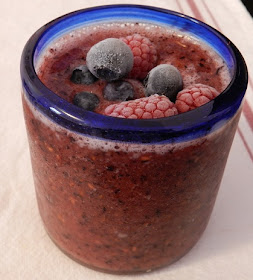Those of you that are familiar with it can sing it's praises, but to those of you who aren't... let me tell you what you're missing.
Caponata is the epitome of Sicilian flavors. It is sweet, sour and a little salty. It has a depth of flavor that comes out even more after a day or two, and like most things: every Sicilian household has their own variation. It is basically a condiment. It is meant to be eaten along side a main course.
The main ingredient is eggplant, which is the signature vegetable of Sicily. It is earthy from the eggplant, salty from capers & olives, bitter from vinegar and gets texture from the pine nuts.
That pretty much sums it up, but believe me when I tell you there is nothing I can say that will do it justice.
You know that saying: She might not be the prettiest girl at the party, but she has a great personality. Well, THAT is caponata. It isn't the most appealing thing in a bowl, but for me it was love at first bite... cartoon style: stars in my eyes, birds singing over my head, heart beating visibly out of my chest.
Since discovering my unabashed love for this mouthful of deliciousness, when I make it... I make alot. It freezes beautifully and can be taken out whenever the mood strikes you. Caponata is a great thing to make ahead for a party because the flavor gets even better after a day or two. It's perfect as a topping for toasted bread (crostini). It can be eaten room temp, warm or even cold (right out of the fridge as a late-night snack), but I also like it stirred into warm pasta.
Making caponata is a leisurely activity. It shouldn't be rushed, let the pot simmer away filling your house with the most delicious smells imaginable while you give it the occasional stir thinking of the blissful smile that will creep across your face as you think "she was right, this IS good."
Caponata
- 3 medium eggplants, cut into 1/2 inch cubes
- 2 red bell peppers, 1/2 inch dice
- 3 TB tomato paste
- 1/2 bunch parsley, chopped
- 1/2 bunch basil, chopped
- 3 TB capers
- 1/4 cup red wine vinegar
- 3 TB currants (sub raisins if currants aren't available)
- 3 TB sugar
- 1/4 cup pine nuts, toasted
- 1/4 cup green olives, rough chop
- 1 can diced tomato (14 oz)
- 1/8 cup olive oil
- 1 medium onion, small dice
- 3 stalks celery, small dice
Caponata bubbling away...
- Place the cubes of eggplant in a large bowl or plate. Sprinkle liberally with kosher salt and place another bowl or plate on top to press it down. Let the eggplant drain for about an hour. Rinse the salt off the eggplant and drain the liquid that has come out of the eggplant. Pat dry with paper towel just to absorb some of the water.
- Heat the olive oil and add the onions, celery and pepper. Cook for a few minutes to soften, then add the tomato paste and let that cook out a few minutes. Add the eggplant, stirring occasionally. We are building layer upon layer of flavor...
- Let the eggplant cook down a little. Add the vinegar, chopped tomatoes and sugar. Simmer for 30 minutes. Stir occasionally. (get a glass of wine & check back in a half hour)
- Add the rest of the ingredients, except the basil & parsley. Simmer another 10 minutes, check for seasoning and adjust if needed. (salt, pepper, vinegar, sugar, etc to suit your taste)
- Turn off heat and stir in basil & parsley to combine. Cool down before putting away.
- If freezing, it will keep for up to 2 months if stored properly.
Now about that eggplant...
It's no secret that I feel strongly about supporting local farmers and locally grown produce.
We are in the middle of summer and now is the perfect time to get to know your local farmers. Building a relationship with the people who grow your food is a wonderful thing if you can do it and when they get to know your face, maybe they'll even set aside some really good stuff for you!
Growing up in a rural area, I have always felt a certain connection to nature. All of the fresh vegetables for this recipe were grown no less than 100 miles from where I live.
Consider the impact of transporting produce the next time you are at the grocery store. If you can get apples from 50 miles away, why buy apples that sat on a truck for 4 days travelling 2,000 miles to get to your local store? Besides the fact that the apples from your area will taste better, be fresher and are probably cheaper because there wasn't as much cost in transporting them.
Support your local farmers :o)


















